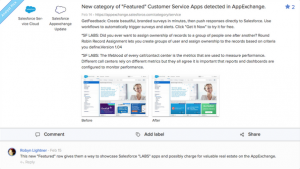Amazon has mastered the art of marketing personalization. Their entire philosophy of saving customers time and money has gone into developing the most streamlined, hyper-personalized shopping experience for the modern buyer. Their comprehensive customer database allows Amazon to identify and act upon trends and preferences within their audience, sending each person individually tailored marketing messages based on segmented data that includes social data, website activity, browsing history, areas of interest, past purchase history, and so on. In other words, when it comes to marketing personalization: Amazon, you beautiful creature… you’re doing it right.
How can Amazon attribute personalization to their success?
1. They pay attention to Big Data.
Think about the last time you had to pick out a birthday gift for someone. Naturally, you put some thought into the matter, so you started out by thinking about this person in terms of details: Who is this person? What do they like (or dislike)? What are their interests? Are they more practical or sentimental? What can your gift say about the relationship between you two?
With that 360-degree profile of this person you’ve assembled, you’re able to narrow down your gift ideas to things that you know they’ll love. The same concept applies to marketing personalization, and how Amazon uses its customer data to advertise the most appealing item to each customer. They integrate social data, customer purchases, browsing history, customer lifecycles, and rich customer profiles to create hyper-personalized communications. Within these communications are offers, products and content that targets each individual customer’s needs and interests.
2. They send the right messages at just the right time.
Once this information is gathered, Amazon uses it to tailor real-time communications with their customers in a way that’s personable, friendly, and addresses their needs.
For example, let’s say Jill W. got a new puppy 2 weeks ago. She starts watching The Dog Whisperer on Amazon Prime, browsing books about puppies on her Kindle device, and starts looking for cheap chew toys. All of this is tracked by Amazon, whose algorithms assemble this information and realize that Jill will likely be interested in pet-related merchandise and media. Combining all of this information via marketing personalization, Amazon sends Jill an email with a variety of offers and products that she may be interested in based on what other dog owners have bought before, like puppy pads, puppy food, dog beds and pet toys. After Jill purchases some of these dog-themed items, another real time email is sent suggesting other items that she might like to buy.
3. They understand that the little extras drive big results.
A valuable lesson I’ve learned about any relationship is that it’s the details that matter. Sometimes, you show someone you care when you remember something about them that’s small, but personal to them.
In this case, Jill and her puppy are two happy campers thanks to Amazon’s personalized recommendations, who seemed to know what she would need before she even did. As thanks for using Jill’s personal data to drive revenue, Amazon has built a “loyalty discount” of sorts right into their personalization engine. Over time, Amazon remembers items that customers put into their carts and abandon (for whatever reason), and is can remind customers about that item at an appropriate time, like when it goes on sale. In this case, a doghouse that Jill had looked at months before – but didn’t buy due to the price – has just been discounted, and Amazon sends her an email that makes her consider the doghouse again and how happy her dog would be in it.
These little extras make a big difference, and an automated personalization engine can spot trends and patterns that would slip past even the most experienced marketers. Picking out these hidden trends will boost your revenue and sales along with impressing the heck out of your customers. Companies in any industry could benefit from adopting similar practices in order to increase their ROI and enhance customer engagement. Follow Amazon’s example: improve your marketing personalization through Big Data and you, too, can do it right.
Digital & Social Articles on Business 2 Community(97)








